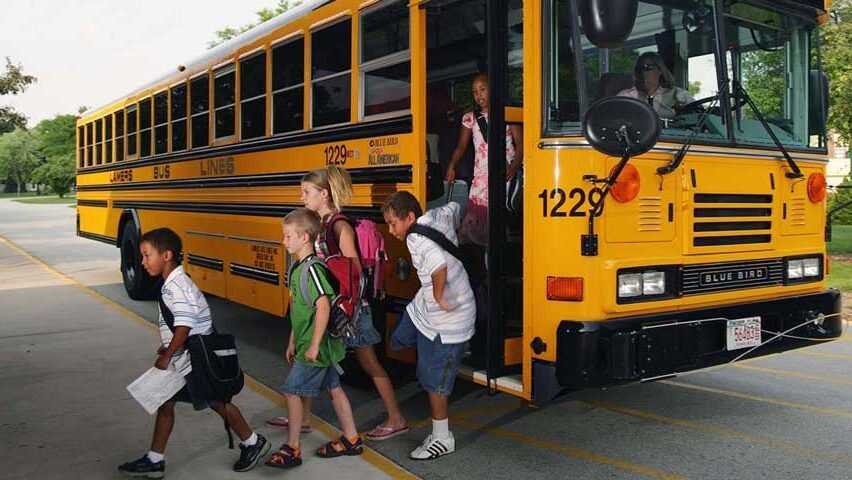Every parent wants to feel confident that their children are safe when they board a school bus. These vehicles are designed to be among the safest on the road, but rollovers remain a serious concern in certain accidents. While school buses account for a small fraction of traffic crashes, the potential for severe injuries during a rollover is enough to spark worry for parents and communities. Making school buses safer starts with understanding the risks and taking proactive steps to address them.
From better design standards to improved driver training, there are countless ways to reduce the likelihood of rollovers and protect students. Dealing with these risks doesn’t just provide peace of mind; it creates a transportation system where safety is always the priority. Understanding how school buses can be made safer benefits everyone, from students and parents to drivers and the broader community.
The Unique Risks of School Bus Rollovers
School buses are large, high-profile vehicles, which makes them more prone to rollovers under certain conditions. Sharp turns, sudden stops, and collisions with other vehicles can cause a school bus to tip over, especially when roads are wet or icy. Unlike passenger cars, their high center of gravity creates challenges in maintaining balance during abrupt maneuvers.
In a rollover, unsecured passengers can be thrown around, increasing the risk of severe injuries. While school buses are built with safety in mind, including reinforced roofs and padded seats, these features are not always enough to prevent harm. Recognizing the unique risks associated with school bus rollovers is the first step in creating solutions that keep students safe.
Enhancing Driver Training and Safety Protocols
The person behind the wheel plays a critical role in preventing school bus rollovers. Drivers who are well-trained in defensive driving techniques and vehicle handling can avoid situations that lead to rollovers. Comprehensive training programs should include strategies for managing challenging road conditions, avoiding sharp turns, and responding to emergencies. Regular driver evaluations ensure that drivers maintain these skills over time.
Safety drills for students and drivers also improve outcomes during accidents. Teaching students how to brace themselves or safely exit a bus during an emergency can reduce injuries. Encouraging drivers to consistently practice safe habits builds a culture of safety within school transportation systems. Driver education combined with clear safety protocols ensures that everyone onboard is better prepared for unexpected situations.
Improving School Bus Design to Prevent Rollovers
Design enhancements can make school buses less likely to roll over and more effective at protecting passengers during accidents. Features like a lower center of gravity and wider wheelbases improve stability, reducing the chances of tipping. Adding electronic stability control systems can help drivers maintain control, especially during sharp turns or sudden stops. These design improvements save lives and reduce the severity of accidents.
Seat belts are another critical feature for improving passenger safety during a rollover. While many states have implemented seat belt requirements for school buses, there is still progress to be made nationwide. Ensuring that all school buses meet the highest safety standards is essential for preventing rollovers and keeping children safe on the road. Modernizing school bus fleets with advanced safety features ensures students are better protected.
School Bus Safety: The Importance of Well-Maintained Roads
Road conditions play a significant role in the likelihood of school bus rollovers. Poorly maintained roads with potholes, uneven surfaces, or debris can cause a driver to lose control. Rural routes often pose additional challenges, including narrow lanes, sharp curves, and limited visibility. These factors increase the risk of rollovers, especially during poor weather conditions.
Communities and local governments can contribute to school bus safety by prioritizing road maintenance and infrastructure improvements. Installing guardrails on high-risk routes and ensuring that school bus stops are placed in safe locations can also reduce the chances of accidents. Consistent road maintenance helps reduce risks and ensures a safer commute for students. A collaborative effort between schools and municipalities is essential for long-term safety.
Providing Legal Aid to Families Affected by Tragic Accidents
Even with the best precautions, school bus rollovers can still occur, leaving families grappling with medical expenses and emotional trauma. Understanding the legal options available is an important part of the recovery process. Consulting with a school bus accident lawyer in Colorado Springs helps families navigate the complexities of these cases and secure compensation for injuries or losses. Legal support provides clarity and guidance during a challenging time.
Legal professionals assist families in holding negligent parties accountable, whether it’s a driver, school district, or bus manufacturer. They ensure that victims receive the support needed to cover medical bills, rehabilitation, and other costs. These efforts also promote accountability, encouraging safety improvements in school transportation systems. Having experienced legal guidance provides peace of mind and allows families to focus on recovery.
The Importance of Community Awareness and Advocacy
Preventing school bus rollovers requires a collective effort from parents, educators, and local authorities. Raising awareness about the importance of safety measures, such as driver training and vehicle upgrades, encourages action at every level. Parents can advocate for stricter safety regulations and better resources to keep their children protected during their commute. Community involvement strengthens the case for necessary changes.
Community-driven initiatives, such as hosting school bus safety workshops or supporting local infrastructure improvements, also play a vital role. These efforts highlight potential risks and promote solutions that improve safety. When safety becomes a shared priority, schools, governments, and families work together to create an environment where rollovers and other accidents are far less likely. Collaboration ensures better safety outcomes for everyone.
Creating a Culture of Safety for School Transportation
Making school buses safer goes beyond mechanical upgrades and regulations—it requires creating a culture of safety that prioritizes the well-being of students. Encouraging open communication between schools, drivers, and parents fosters a sense of accountability and vigilance. When everyone works together, risks are minimized, and students can travel with confidence. A unified approach leads to stronger safety systems.
Investing in safety not only safeguards students but also bolsters trust in school transportation systems. Each action aimed at minimizing rollovers and enhancing safety creates a significant impact. Communities can unite to guarantee that school buses stay among the safest options for children’s travel. Prioritizing safety brings advantages to everyone, from individual families to society as a whole.



